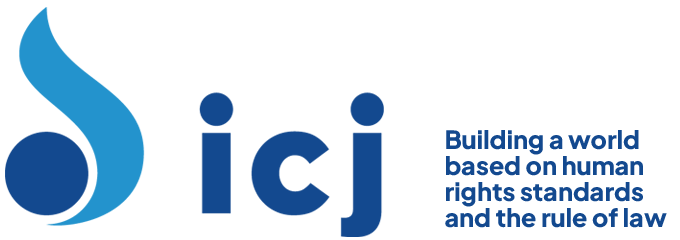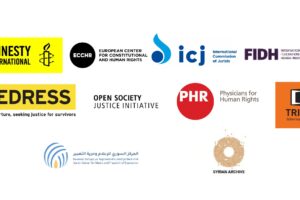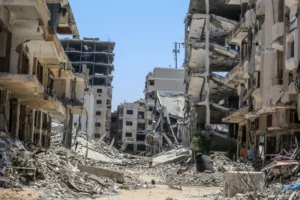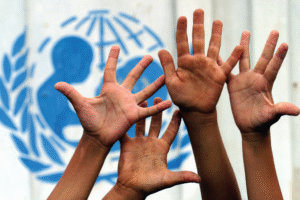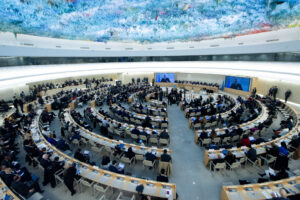III. Thematic analysis: eliminating discrimination against women in political and public life with a focus on political transition
B. Targets and achievements in women’s representation
28. The Working Group is concerned that the knowledge gap remains on the whole spectrum of women’s participation in political and public life. This undermines the capacity to move to gender-responsive inclusive democracy, development and peace. Most available data is not sufficiently disaggregated to allow the understanding of the intersectionality of gender with other grounds of discrimination, in the light of Committee on the Elimination of Discrimination against Women general recommendation No. 28 (2010) according to which “discrimination against women based on sex and gender is inextricably linked with other factors that affect women, such as race, ethnicity, religion or belief, health, status, age, class, caste and sexual orientation and gender identity” (para. 18). Evidence-based knowledge is weak on the extent of violence against women in political and public life and its impact on women’s capacity to exercise their right to political participation.
47. Women’s rights advocates engage actively in different normative regimes, including religious communities and indigenous or customary groups. They do so, among others, by initiating hermeneutic projects within their respective religions. In their cultural communities, women express their opinions on politics also through the arts, including writings, music and plays, and their works have been attacked, criminalized and condemned by State and non-State actors. In certain contexts, economically independent women playing leadership roles are stigmatized and attacked as witches.{{24}} Lesbian, bisexual and transgender women who defend their human rights are vulnerable to attacks on their civil rights and personhood{{25}} where there is a climate of intolerance arising from their perceived challenge to established norms of gender identity, gender roles and sexuality.{{26}}
48. The new space and opportunities created by revolutionary developments in ICTs have enabled women to initiate or enhance their participation in political and public life. Women who are confined in private homes have used ICTs as a means to break out of their isolation and take part in collective action. Women who live under threat of attack because of their sexual orientation have found safety in the anonymity of the Internet, which allows them to freely speak out, establish virtual communities and participate in public debates. During moments of political unrest, women have utilized SMS, micro-blogging and social networking to provide “bodyguard” protection to each other on the ground.{{27}}
D. Eliminating structural and societal discrimination against women in political and public life
4. Stereotypes
69. Stereotypes{{41}} of women’s capacities and roles that negatively affect women’s effective participation in political and public life persist around the world. Despite evidence of women’s important contributions in other fields of life, including in the labour market, stereotypes of female inadequacy in politics continue to be used as a basis for their marginalization and segregation in decision-making positions, with care and distributive tasks such as health and social welfare allocated to women, while men are assigned to economic and defence affairs, distorting the power structure and resource allocation.{{42}}
70. Women who belong to vulnerable groups, based on race, class, ethnicity, religion or belief, health, status, age, class, caste and sexual orientation and gender identity, are effectively barred from political and public life based on multiple stereotyping. In its concluding observations, the Committee on the Elimination of Discrimination against Women has expressed concern about stereotyped media portrayals of women’s roles within the family and society.
Link to full text of the report: Report-WGWomen-2013-eng
[[24]]24. See Partners for Law in Development, Targeting of Women as Witches: Trends, Prevalence and the Law in Northern, Western, Eastern and Northeastern Regions of India (2013).[[24]]
[[25]]25. See A/HRC/19/41.[[25]]
[[26]]26. Women Human Rights Defenders International Coalition, Global Report on the Situation of Women Human Rights Defenders (2012), p. 89.[[26]]
[[27]]27. Association for Progressive Communications (APC) submission to the Working Group, January 2012, second page.[[27]]
[[41]]41. See Rebecca J. Cook and Simone Cusack, Gender Stereotyping: Transnational Legal Perspectives (2010); and Cusack, Stereotyping and Law, available from http://stereotypingandlaw.wordpress.com/.[[41]]
[[42]]42. Committee on Women‟s Rights and Gender Equality, report (footnote 5), p. 7.[[42]]
